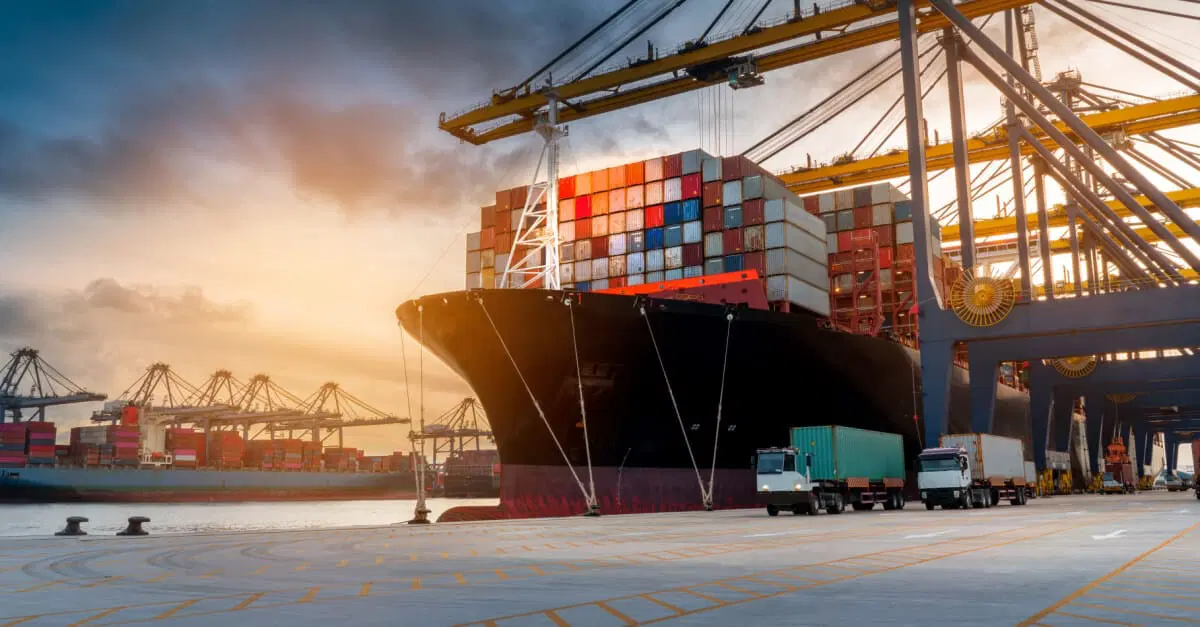Navigating Global Shipping Delays: Effective Solutions for Smooth Operations

As a business owner, I have come to understand the significant impact that global shipping delays can have on our operations. These delays can lead to increased costs, missed deadlines, and unhappy customers. It is crucial to have a solid understanding of the factors contributing to these delays in order to navigate them effectively.
One of the primary reasons for global shipping delays is congestion at ports. With the increase in international trade, ports often need help to handle the volume of incoming shipments. This can result in delays in unloading and processing containers, causing a ripple effect throughout the supply chain. Labor disputes, customs inspections, and natural disasters can further exacerbate the situation.
Impact of global shipping delays on businesses

The impact of global shipping delays on businesses cannot be overstated. These delays can disrupt production schedules, leading to a shortage of inventory and an inability to fulfill customer orders. This not only affects revenue but also damages the business’s reputation. Customers who experience delays in receiving their orders are likely to seek alternatives, losing customer loyalty.
Furthermore, the increased costs associated with global shipping delays can eat into profit margins. Businesses may need to pay additional fees for storage, expedited shipping, or alternative transportation methods to overcome the delays. These added expenses can quickly accumulate and significantly burden the bottom line.
Common causes of global shipping delays

Understanding the common causes of global shipping delays is essential for developing effective solutions. Some of the most common causes include:
Weather-related disruptions: Natural disasters such as hurricanes, typhoons, or heavy snowfall can disrupt shipping routes and delay shipments.
Congestion at ports: As mentioned earlier, ports can become overwhelmed with the volume of incoming shipments, leading to delays in unloading and processing containers.
Labor disputes: Strikes or labor disputes among port workers or transportation providers can bring shipping operations to a halt.
Customs delays: Stringent customs inspections and paperwork requirements can cause delays in clearing shipments at ports of entry.
Infrastructure limitations: Inadequate infrastructure, such as outdated port facilities or a lack of transportation infrastructure, can hinder the smooth flow of goods.
Root Causes of Global Shipping Delays
Global shipping delays have become a persistent challenge for businesses and consumers alike. From empty store shelves to inflated freight costs, the ripple effects of disrupted maritime logistics are widespread. To effectively manage and mitigate these issues, it’s crucial to understand the root causes behind the bottlenecks in global supply chains. Below, we explore the key factors driving these delays:
Port Congestion and Infrastructure Limitations: One of the primary culprits behind shipping delays is severe congestion at major international ports. As global trade volumes surged especially during and after the COVID-19 pandemic many ports struggled to handle the influx of cargo. Limited berths, outdated equipment, and insufficient automation have made it difficult to load and unload ships efficiently.
Inland transportation delays, such as shortages in truck drivers or limited rail capacity, further exacerbate port congestion. In many cases, containers wait days or even weeks at ports before being transported to their destinations, disrupting entire supply chains.
Labor Shortages and Strikes: The global shipping industry heavily relies on skilled labor from dockworkers to truck drivers and warehouse operators. However, many countries are experiencing acute labor shortages due to aging workforces, pandemic-related health concerns, and shifting job market preferences.
Moreover, labor strikes and disputes over wages, working conditions, or contracts can halt port operations entirely. Even a short strike at a critical hub like the Port of Los Angeles or Rotterdam can cause significant delays that ripple across global trade networks.
Impact of Geopolitical Tensions and Trade Restrictions: Geopolitical instability remains a major disruptor of international shipping. Conflicts like the Russia-Ukraine war, tensions in the South China Sea, and restrictions on shipping routes due to sanctions or embargoes have led to increased uncertainty and rerouting of cargo.
Trade restrictions, tariffs, and political decisions can also slow down customs clearance processes and force companies to find alternative suppliers or longer routes, increasing lead times and transportation costs.
Natural Disasters and Climate-Related Disruptions: Weather events and natural disasters pose unpredictable threats to global logistics. Hurricanes, floods, typhoons, and earthquakes can shut down ports, damage infrastructure, and render critical transportation corridors unusable.
On a broader scale, climate change is intensifying these weather events and causing new logistical concerns. For instance, low water levels in rivers like the Rhine or Panama Canal due to droughts can reduce shipping capacity, delaying cargo movement and increasing costs.
Ongoing Effects of the COVID-19 Pandemic: Although global economies are gradually recovering, the lingering effects of the COVID-19 pandemic continue to impact shipping. Lockdowns, factory closures, and quarantines in major manufacturing hubs especially in Asia have disrupted production schedules and cargo flows.
Even now, sudden outbreaks can lead to port closures or restrictions, causing unpredictable delays. Additionally, the pandemic revealed vulnerabilities in “just-in-time” inventory models, pushing companies to rethink how they manage supply chains.
Industries Most Affected by Shipping Delays

Shipping delays have wide-reaching consequences, but certain industries feel the impact more acutely than others. E-commerce and retail sectors face serious challenges as delivery delays directly affect customer satisfaction and brand loyalty, especially during peak shopping seasons. Manufacturing and industrial sectors struggle with production slowdowns when essential components or raw materials are held up in transit, disrupting entire assembly lines.
The automotive and electronics industries are particularly vulnerable due to their reliance on just-in-time supply chains and specialized parts sourced globally any delay can halt production or delay new product launches. Meanwhile, the food and perishables industry suffers both financially and logistically, as shipping delays can lead to spoilage, wastage, and health risks, especially when dealing with temperature-sensitive goods. Together, these industries highlight the critical need for resilient and responsive global logistics systems.
The Financial and Operational Impact
Global shipping delays bring a host of financial and operational challenges that can severely disrupt business performance. One of the most immediate consequences is increased freight costs, as limited cargo space and rerouted shipments drive up transportation expenses. Companies also face inventory shortages and stockouts, which hinder their ability to meet demand and maintain consistent operations.
These shortages often lead to customer dissatisfaction and lost revenue, especially when delivery expectations are not met or popular products are unavailable. Additionally, delays in receiving goods can create cash flow challenges, as businesses must tie up capital in orders that are in transit or delayed, while still managing overhead costs and operational expenses. Altogether, these issues underscore the importance of strategic planning and supply chain agility in today’s uncertain logistics landscape.
Short-Term Strategies for Managing Delays
To navigate the immediate challenges of global shipping delays, businesses can implement several short-term strategies to maintain stability and customer trust. Improving communication with suppliers and customers is crucial transparent updates on order status and delivery timelines help manage expectations and strengthen relationships. Companies should also consider diversifying freight carriers and routes to reduce dependence on a single logistics provider or congested shipping lane, thereby improving flexibility.
Prioritizing high-demand inventory ensures that the most critical or fast-moving products remain in stock, minimizing disruptions in sales and service. Additionally, adjusting safety stock levels by increasing buffer inventory can provide a cushion against unpredictable lead times, allowing businesses to continue operations smoothly even when shipments are delayed. These practical steps can offer much-needed stability in an otherwise uncertain shipping environment.
Long-Term Solutions for Resilience
Building long-term resilience in the face of global shipping delays requires a strategic shift in how businesses structure and manage their supply chains. One key approach is nearshoring and reshoring manufacturing, which brings production closer to the end market, reducing reliance on distant suppliers and minimizing transit times. Equally important is investing in supply chain visibility tools that provide real-time tracking, predictive analytics, and early warning systems enabling faster, data-driven decision-making.
Companies can also gain a competitive edge by building strategic supplier relationships, fostering collaboration, flexibility, and shared risk management during times of disruption. Finally, implementing agile logistics and fulfillment strategies, such as flexible warehousing, multi-channel distribution, and adaptive delivery models, ensures that businesses can quickly respond to changes in demand or supply. Together, these measures create a more resilient, responsive, and future-ready supply chain.
Leveraging Technology to Overcome Challenges
Technology plays a pivotal role in overcoming the complexities of global shipping delays by enhancing visibility, efficiency, and responsiveness across the supply chain. Real-time tracking and predictive analytics empower businesses to monitor shipments, anticipate disruptions, and make proactive decisions before issues escalate. In warehouses and distribution centers, automation—such as robotic picking systems and automated sorting streamlines operations, reduces human error, and accelerates order fulfillment.
Meanwhile, blockchain technology offers a secure and transparent way to share data across stakeholders, improving trust, traceability, and compliance throughout the supply chain. Additionally, AI-driven demand forecasting helps companies predict customer needs with greater accuracy, allowing for better inventory planning and reduced waste. By integrating these advanced tools, organizations can build smarter, more adaptive supply chains that are better equipped to handle future disruptions.
Case Studies and Success Stories
Real-world examples of how leading brands have adapted to global shipping delays offer valuable insights and inspiration for businesses facing similar challenges. Companies like Amazon and Zara have responded with agile supply chain strategies Amazon by expanding its regional fulfillment centers to reduce delivery distances, and Zara by leveraging local production and frequent inventory replenishment to stay responsive to market trends.
Apple, known for its complex global supply chain, has invested heavily in supplier diversification and inventory buffers to maintain product flow despite disruptions. Meanwhile, smaller innovators have embraced digital transformation, using tools like AI forecasting and blockchain to enhance transparency and coordination. These case studies highlight a common theme: adaptability, investment in technology, and proactive planning are key to overcoming delays and emerging stronger in a volatile global market.
Government and Policy Responses
Governments around the world are playing a critical role in addressing global shipping delays through a mix of regulatory actions, trade agreements, and infrastructure development. Regulatory changes and updated trade agreements aim to streamline customs procedures, reduce red tape, and promote smoother cross-border logistics, making international trade more efficient and predictable.
In response to recent disruptions, many governments are also prioritizing infrastructure investments and port modernization expanding capacity, upgrading technology, and improving intermodal connectivity to handle growing cargo volumes more effectively. These initiatives not only alleviate current congestion but also strengthen the long-term resilience of national and global supply chains. As policymakers continue to collaborate with industry stakeholders, these strategic interventions are key to building a more agile and future-proof logistics ecosystem.
Preparing for the Future of Global Shipping
As global shipping continues to evolve in an unpredictable environment, businesses must proactively prepare for the future by embracing flexibility and resilience in their supply chains. Supply chain flexibility—through diversified sourcing, multi-modal transport options, and scalable logistics networks enables companies to adapt quickly to shifting conditions. At the same time, building a risk-resilient operation is essential, involving strategies like scenario planning, supplier diversification, and investment in digital tools that enhance visibility and responsiveness.
Equally important is the growing emphasis on sustainability in future logistics, as companies and governments work to reduce carbon emissions, adopt greener transportation methods, and build environmentally responsible infrastructure. By combining agility with resilience and sustainability, businesses can not only withstand future disruptions but also thrive in a more conscious and competitive global marketplace.
Frequently Asked Question
What are the main reasons behind global shipping delays?
Global shipping delays are caused by several factors including port congestion, labor shortages, geopolitical tensions, extreme weather events, and lingering impacts from the COVID-19 pandemic. Each of these disrupts the smooth flow of goods through global supply chains.
How do shipping delays impact businesses financially and operationally?
Shipping delays can lead to increased freight costs, inventory shortages, lost sales, customer dissatisfaction, and cash flow issues. These disruptions can hurt both profitability and customer loyalty if not managed effectively.
What short-term strategies can companies use to manage shipping delays?
Businesses can respond by improving communication with suppliers and customers, diversifying freight carriers and routes, prioritizing high-demand inventory, and adjusting safety stock levels to buffer against delays.
How can technology help reduce the impact of shipping disruptions?
Technologies like real-time tracking, predictive analytics, warehouse automation, blockchain, and AI-driven demand forecasting help companies gain visibility, streamline operations, and make proactive decisions to minimize the effects of delays.
What long-term solutions can build supply chain resilience?
Long-term strategies include nearshoring or reshoring manufacturing, investing in supply chain visibility tools, building strong supplier partnerships, implementing agile logistics models, and incorporating sustainability to future-proof operations.
More Related Post: Mastering the Art of Working Remotely
Conclusion
Global shipping delays pose significant challenges for businesses. However, by understanding the causes of these delays and implementing practical solutions, companies can navigate through them and maintain smooth operations. Effective communication with shipping partners, exploring alternative shipping routes, optimizing inventory management practices, leveraging technology solutions, and building solid relationships with suppliers are just a few of the strategies that can help mitigate the impact of global shipping delays. By being proactive and adaptable, businesses can ensure that their operations continue to run smoothly, even in the face of shipping challenges.






